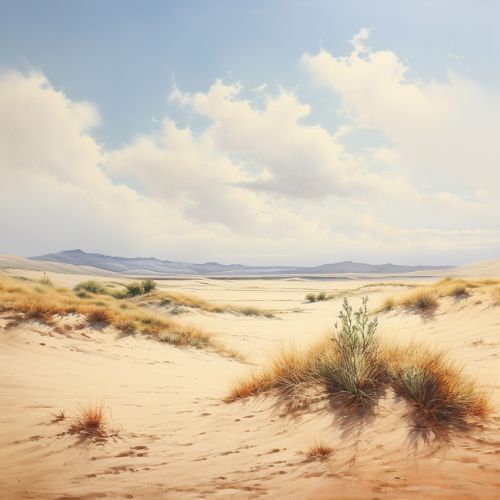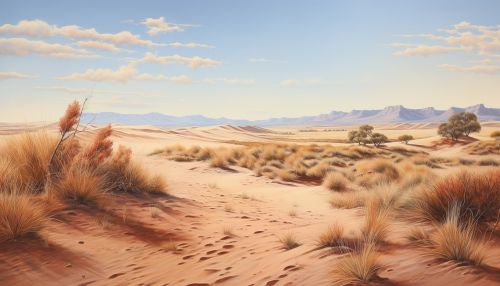Desert
Introduction
A desert is a barren area of landscape where little precipitation occurs and, consequently, living conditions are hostile for plant and animal life. The lack of vegetation exposes the unprotected surface of the ground to the processes of denudation. About one-third of the land surface of the world is arid or semi-arid. This includes much of the polar regions, where little precipitation occurs, and which are sometimes called polar deserts or "cold deserts".
Classification
Deserts are classified by their geographical location primarily and by the climatic conditions and types of the desert vegetation. They are generally classified into four types: hot and dry, semiarid, coastal, and cold.
Hot and Dry Deserts
Hot and dry deserts are characterized by very high temperatures, very low humidity and very little water. These conditions make hot and dry deserts inhospitable to most forms of life. However, a few species have adapted to these harsh conditions and are able to survive and even thrive in this environment.
Semiarid Deserts
Semiarid deserts are found in North America, Europe, and northern Asia. These deserts are cooler than hot and dry deserts and have a slightly higher level of precipitation. The vegetation in these deserts is sparse and consists mainly of grasses and shrubs.
Coastal Deserts
Coastal deserts are found in moderately cool to warm areas such as the Nearctic and Neotropical realm. These deserts are characterized by cool winters and long, warm summers. The cool winters in coastal deserts are followed by moderately long, warm summers.
Cold Deserts
Cold deserts have long, cold winters, and short, cool to warm summers. They are found in the Antarctic, Greenland, and the Nearctic realm. They have a mean annual temperature of between -2 to 4 degrees Celsius.
Desert Features
Deserts often contain vast sand dunes, rock formations, and dried up river beds. The sand in deserts is mostly composed of silica (SiO2) in the form of quartz. The second most common type of desert sand is calcium carbonate, in the form of chalk or limestone.


Flora and Fauna
Despite the harsh conditions, deserts are home to a variety of plants and animals. Desert plants, also known as xerophytes, have adapted to the arid conditions by developing modifications that help them to conserve water. Some of these adaptations include having small leaves, being succulent (having thick, water-retaining tissues), and having light-colored, reflective surfaces that help to reduce water loss.
Desert animals have also developed adaptations to survive in the desert. These include being nocturnal, being able to go without water for long periods, and having features that help them to lose heat.
Human Interaction with Deserts
Humans have lived in deserts for thousands of years. Despite the harsh conditions, humans have found ways to survive and even thrive in deserts. They have developed various survival strategies, such as the construction of underground dwellings to escape the extreme heat and cold, and the cultivation of desert crops that can survive on minimal water.
Desertification
Desertification is the process by which fertile land becomes desert, typically as a result of drought, deforestation, or inappropriate agriculture. It is a serious environmental issue as it leads to a reduction in biodiversity, impacts the water cycle, and can lead to social and economic instability.
